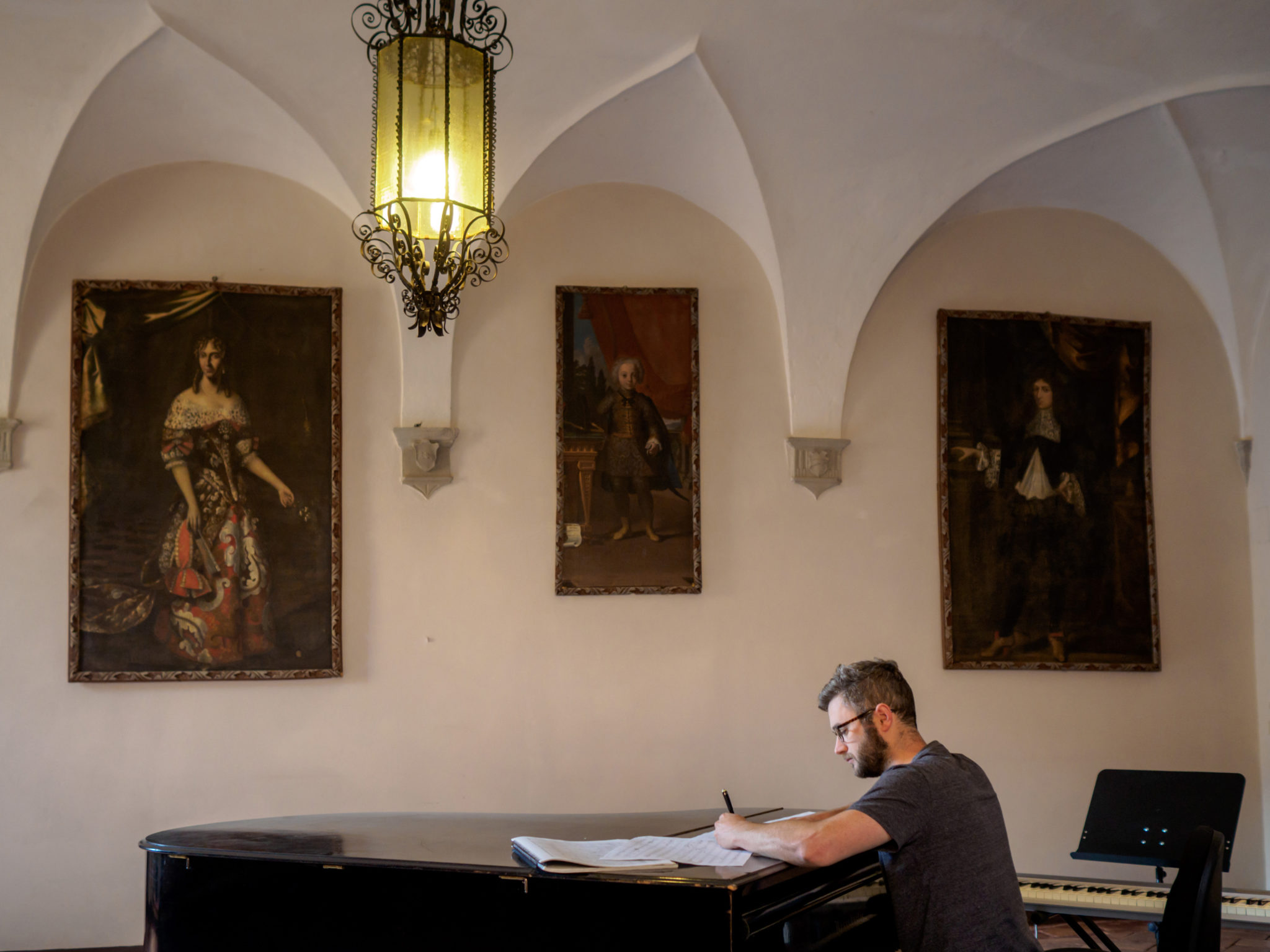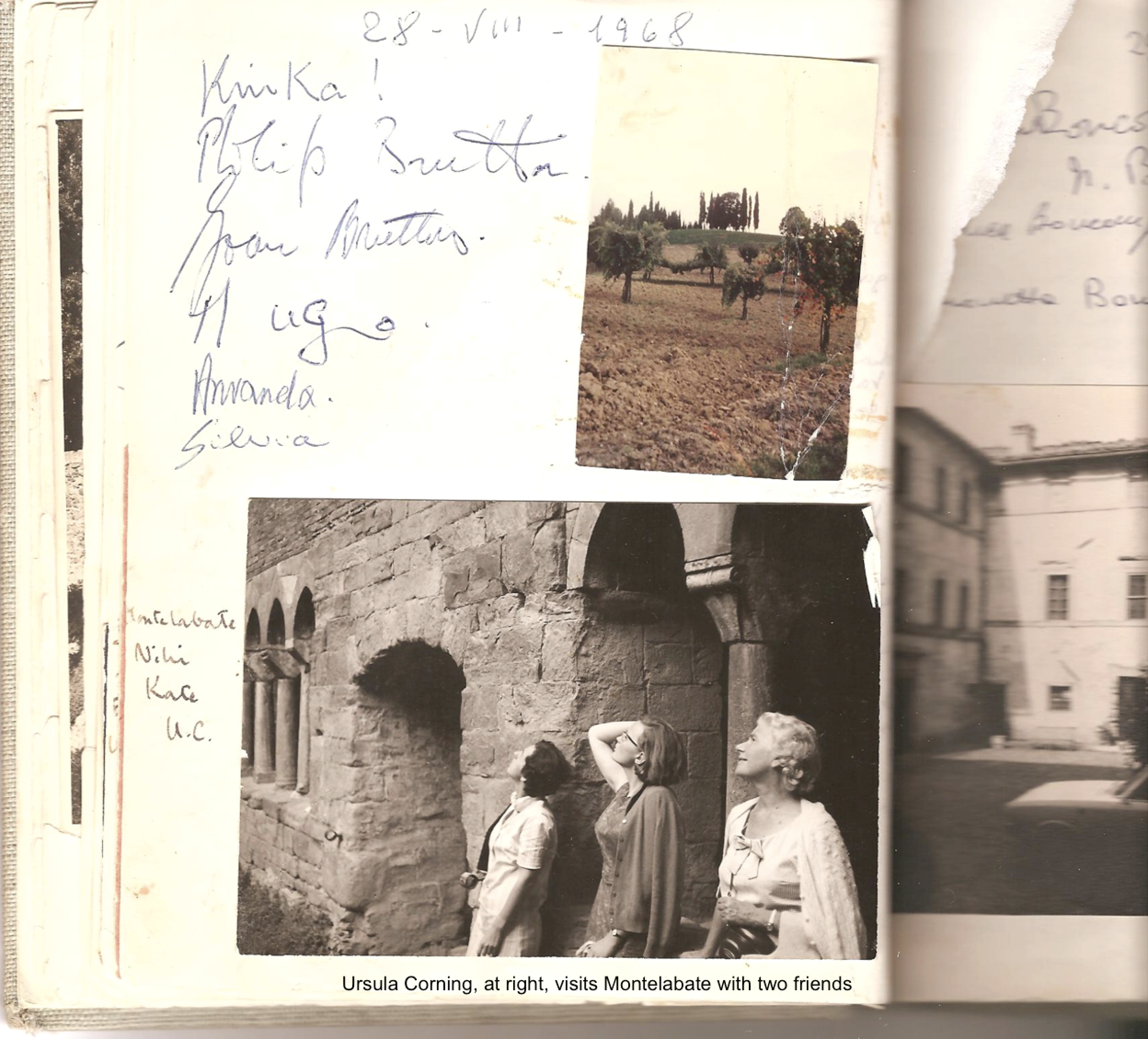our Mission
Civitella Ranieri is an international residency program bringing together visual artists, writers, and composers to work independently and communally without judgment or interruption.
Vision
Civitella offers a peaceful and welcoming sojourn in which its community can deepen connections to one another and to the world around them. The environment is one of concentrated self-directed work and honest exchange.
Values
-Hospitable environment and welcoming culture
-Supportive and generous exchange of ideas
-Inclusion of all cultures, histories, and identities
-Authentic, healthy, regional food
Our Setting
The upper Tiber valley in Umbria is our setting. Civitella Ranieri is lodged in a beautiful thick-walled 15th century castle – a fortress that provided protection, sustenance, and renewal to generations of the Ranieri family and its extended community. Our founder, Ursula Corning, continued that legacy by providing guests from around the world both solitude and community in a strikingly simple and beautiful environment. The focus at Civitella is on work and conversation that transcend disciplines, cultures, and geography in an intimate and welcoming setting. A stay at Civitella fosters curiosity and connections.
The Process
Fellows are proposed through an international nomination and jury process, and,
upon selection, are invited to spend six weeks between May and October at the castle.
Travel, lodging, and meals are provided. Each artist joins 12-15 Fellows and
Director’s Guests.

History
Ursula Corning, founder of the Civitella Ranieri Foundation, was born in Switzerland in 1903, studied in England, and spent most of her life in New York City. A gifted linguist whose extended family lived in four countries, she crossed borders with ease. Yet, if there is such a place as one’s true home, for Ursula, it surely was her beloved Civitella.
Ursula began visiting Civitella Castle as a young girl but it wasn’t until 1968 that she made the momentous decision to rent the castle indefinitely. Thus began the fabled Civitellian summers enjoyed for the next 35 years by Ursula’s wide and varied, always stimulating, always provocative circle of international friends. The atmosphere of the ancient castle and the quiet beauty of the countryside inspired her artistic guests to express themselves through poetry, music, and the visual arts.
Generations of regular guests, whom Ursula called “the Civitellians,” their friends, and the occasional strangers Ursula spontaneously invited, had the good fortune to enjoy her unparalleled hospitality. Ursula took great pleasure in breaking down social barriers at the dinner table, seating backpackers next to bankers, the old next to the young, and always separating couples. Ursula, who preferred others take center stage, would sit back and listen to the conversations, carried on in as many as five different languages, and watch friendships blossom between people whose paths were unlikely to otherwise have crossed.
In the last decade of her life, Ursula often wondered, “What will become of my dear Civitella after I die? Will it be turned into a dusty museum?” Those who knew her well say that, were she to return today, she would be thrilled to see the Castle abuzz with activity generated by the new Civitellians, the international Fellows now in residence.

Page from a Civitella guestbook, 1968
History of the Ranieri Castle
Located just outside the small city of Umbertide, the Ranieri Castle is one of the best-preserved castles in Umbria. Mention of the site first appeared in a document in 1053 in reference to Saint Christopher’s Church, confirming that a structure existed at least at that date. The current structure dates back to the 16th century and is located inside the walls of the civitella, a term that refers to a fortified site similar to a walled village. A Ranieri family coat of arms on the inner courtyard façade holds the date 1519.
In the early days of the feudal Castle, the community most likely included around twenty or thirty families. The inhabitants produced what they needed to survive, and the feudal lord provided protection. Civitella was considered the northern border of Perugia’s territory, and was part of an invisible fortification made of turrets and castles between the territories of Gubbio and Città di Castello. Evidence of Civitella as a fortified castle can still be seen in the thick stone walls and armorial bearings around the exteriors.
In the 16th century the Umbria region was at peace, and there was little need for armed defense of the Castle. The Ranieri lords decorated the castle with portraits and statues and built beautiful fireplaces in the halls. The statue of Ruggero Cane, the great warrior and military leader, was erected in the entrance courtyard around 1730.
In the 18th century stuffy castles were no longer in fashion, and the lord Constantino Ranieri attempted to refurbish Civitella. Ditches were filled in, gardens designed and trees were planted; and the old Castle began to look more like a villa. The fruit garden, loggia and pergola were built on the western terraces below the Castle, and trees were cleared so one could view the lovely Tiber Valley.
In 1817 came the official abolition of feudalism, and the Ranieri family became subjects of the Papal State. Ruggero Ranieri, the last feudal lord of Civitella, was a loyal subject of the Pope and in 1847 became colonel of the Civil Guard in Perugia. The unification in 1861 brought Umbria into the newly established Kingdom of Italy. Agriculture was an important part of the economy and sharecropping, or mezzadria, became the primary legal agriculture system in Italy. It was under these circumstances that Civitella became a working farm.
Sharecropping in Umbria came to end in the mid-20th century, but evidence of centuries of farming at Civitella can still be seen around the Castle. The studio-apartment Granaio was a granary, and many of the rooms along the outside fortification were used as storage spaces. Large cellar spaces were set up in the basement of the Castle, and the stables were filled with horses. The current art gallery was a barn where small animals were housed, and the offices now used by the Foundation were once a public school house.
Castrabecco, an old farmhouse abandoned in the 1950s and located outside the Castle walls, is now used as studio-apartments for Fellows and Director’s Guest. Studio 6, once used to dry tobacco, has been renovated into a large high-ceilinged artist workspace. Just down the cypress-lined gravel driveway is the composer’s studio Pizza. This space, although at one time a pigsty, is now a beautiful apartment and studio for composers in residence.
A more ancient castle stood on the ground of Civitella before the present one, mentioned for the first time in a document from 1053, in which we find the church of San Cristoforo (St. Christopher) “in the territory of Civitella.” Civitella is only a few kilometers from the Camporeggiano abbey, and the church within the castle walls is still dedicated to St. Christopher today.
Visits to this still sacramented space that holds the relic of Saint Christopher, are available upon request. Email diego@civitella.org.
“Peace and fresh air and freedom to work, to write, to read, to create, to walk in the beautiful Umbrian hills, to sing and share stories and laughter and wine and good food and discover new friends for a lifetime.”